by Marion Patterson | May 12, 2022 | Birds, Garden/Yard, Nature, Trees
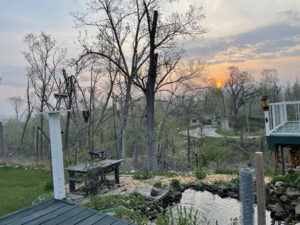 The distant view and the feel are “Hot August Days.” The near view and sounds are mid-May. With this hot weather, the trees have popped, the fruit trees are in full bloom, and the early garden plants emerging after the cooler and damp weather. We may break a century-old heat record today.
The distant view and the feel are “Hot August Days.” The near view and sounds are mid-May. With this hot weather, the trees have popped, the fruit trees are in full bloom, and the early garden plants emerging after the cooler and damp weather. We may break a century-old heat record today.
Two days ago we had the woodstove running. Now the air conditioner!
Notice the haze in the distance and the sun rising in the east – still six weeks from the Summer Solstice. Humidity levels are high. Winds are calmer after the front blew in.
The trees show emerging leaves and catkins. Insects work the fruit trees and low-growing spring flowers.
Birds are everywhere singing, courting, mating, and building nests. Amazing transformation in two days.
-
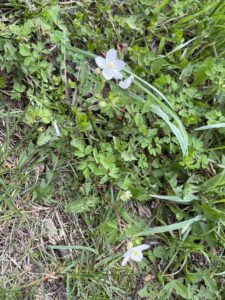
-
Deeply cut leaves of the false rue anemone.
-
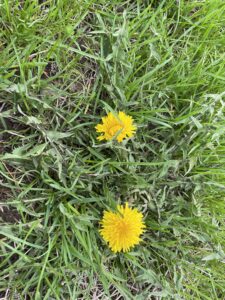
-
going at $8.00 per gallon at wineries, picking blooms from safe places is good income.
-
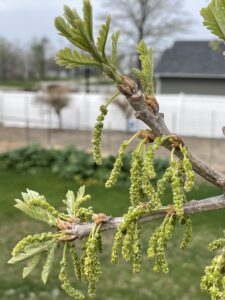
-
the oak popped out in one day with the heat.
-
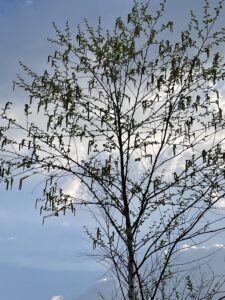
-
birds forage in emerging buds.
by Marion Patterson | Dec 16, 2021 | Labyrinths, Reflections/Profiles, Wonderment
Where Did the 2020 Labyrinth Blog Go?
I’m curious what happened to the 2020 labyrinths blog! While I mainly walked the Phoenix Harmony Labyrinth in our yard, I know I walked other labyrinths. Edith Starr Chase’s lovely one at Wickiup Hill on a magical Winter Solstice evening. The comforting labyrinth at New Bo District. And, early in the season, the Westminster Presbyterian Church of Waterloo, IA, labyrinth. Well, it will show up. Meanwhile, here is a look back anyway.
I’ll just share again.
-
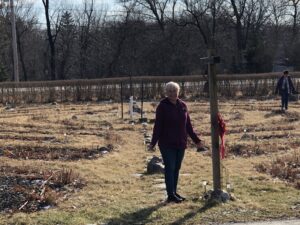
-
Teri blesses the labyrinth
-
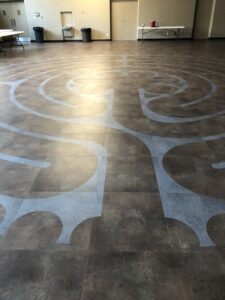
-
Westminster Presbyterian Church in Waterloo, IA, has a lovely inlaid labyrinth.
-
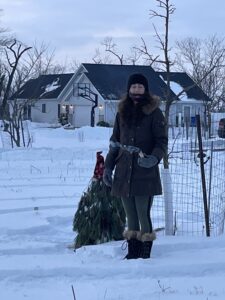
-
Emie smudges the Phoenix Harmony Labyrinth December 31, 2020.
-
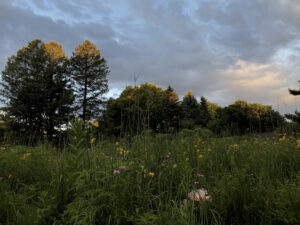
-
The last time I took a pix of the Three Guardian Firs before Derecho 2020
-
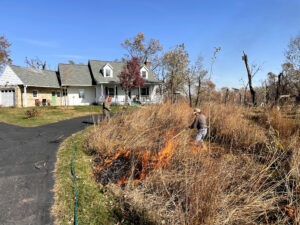
-
Each year we burn the labyrinth.
-
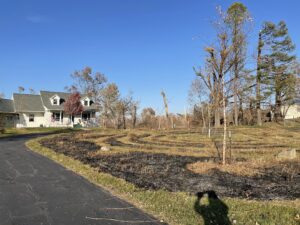
-
While bare, the ash prepares the soil for next year’s blooms.
-

-
Child at Center of Wickiup Hill Labyrinth
-
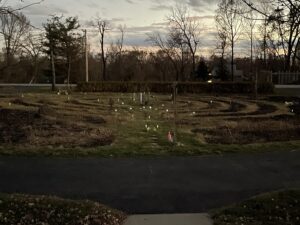
-
Walking the labyrinth with the solar lights in autumn is magical.
Now on to 2021!
-

-
March – A lovely labyrinth tucked into a corner of the seminary
-

-
Looking back.
-
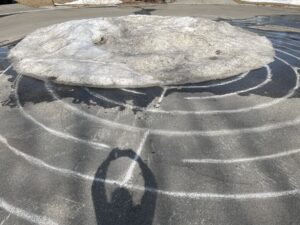
-
April in Anchorage – Sometimes walking the path is enough.
-
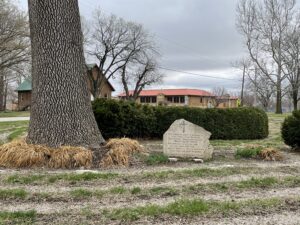
-
March – This unusual labyrinth incorporated a tree in the middle.
-

-
March – Maintenance is always important with labyrinths.
-
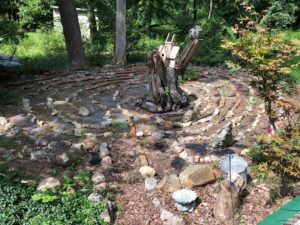
-
September – A favorite labyrinth to visit.
-
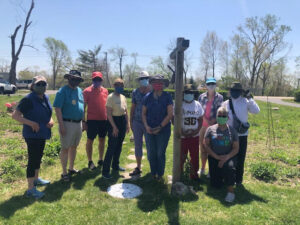
-
May – Several people joined to take in the emerging plants.
-

-
July – Part of the Johnson County, Iowa, conservation commission, this labyirnth invites contemplation.
-

-
Fall – A child explores the labyrinth.
-
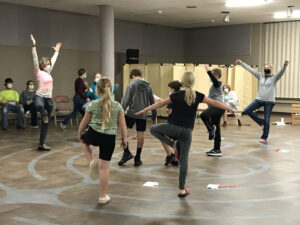
-
October – We explored ways to interact with the labyrinth.
-
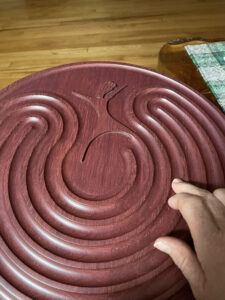
-
The weekly finger labyrinth walks sponsored by Veriditas attract people from six continents.
-
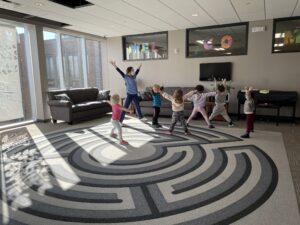
-
November – The labyrinth is playful.
-
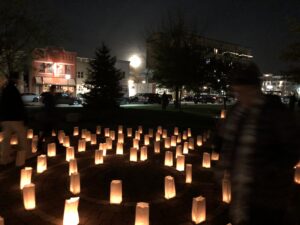
-
Edith Starr Chase sponsors lovely labyrinth walks.
-
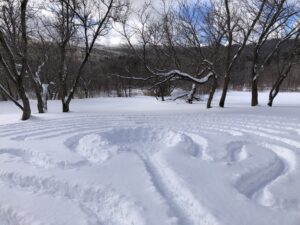
-
October – I walked in the fall without snow.
-
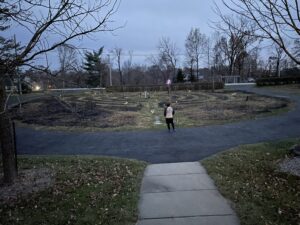
-
November – P. Admires his work as the solar lights glow softly.
by Marion Patterson | Aug 26, 2021 | (Sub)Urban Homesteading, Flowers/Grasses, Garden/Yard, Labyrinths
In early July we sat on our front porch watching delightfully splashes of color dance in the breeze. A restoration triumph stood stoutly in the wind-blooming compass plant.
Restoring prairies takes patience. We began ten years ago by converting a former mowed lawn into a prairie. For the next few years, our emerging prairie looked rough. A weed patch mostly, but as the years rolled by the “weeds” also called Mother Nature’s stitches, retreated as prairie plants matured and outcompeted them. Coreopsis, coneflowers, monarda, and vervain began adding color to ever more vigorous big and little bluestem, switch, and Indian Grasses.
Then, this year, compass plants that had been flowerless for years, shot spikes six feet into the air. In mid-July, the plant is in full bloom.
Difference Between Domestic and Native Plants
When you plant beans, tomatoes, or squash and many domestic flowers and the fruits of labor are rewarded that same year with fresh vegetables and colorful petals. Not so with native plants. Prairie takes patience. Some native pioneers come on in a year or two but many wait and wait and wait. Sometimes it can take upwards of 15 years for stately compass plants to bloom, so ours may be racehorses to show color in just a decade. More point skyward along with coneflowers, purple prairie coneflower, and rattlesnake master along the roadside in front of our yard.
We have tour prairies at Winding Pathways. Into our oldest Marion has crafted a prairie labyrinth, giving walkers an opportunity to follow a contemplative path surrounded by blooming, dancing flowers and tall grasses.
The “middle-aged” prairie out in the back is a haven for birds, adds color, and is a buffer from the ruined-looking woods where young trees are starting to show amidst the broken derecho tree trunks.
In 2019 and following the August 10th, 2020, Derecho we scattered prairie/open woodland seeds to encourage diverse plants on the east-facing slope.
Our youngest prairie, planted in the spring of 2020, remains in infancy. A mass of black-eyed Susans shines brightly, and many other small bloomless plants show promise to color up as the years go by. We look forward to their future.
We welcome anyone to visit, walk the labyrinth, and enjoy our prairie and the butterflies that skip from flower to flower within it.
-

-
Sun rising over the prairie.
-
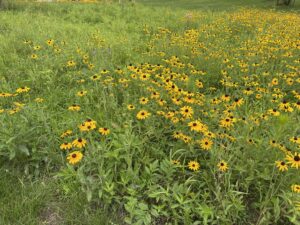
-
Pioneer plants like the Black Eyed Susans encourage people as they plant prairies.
-
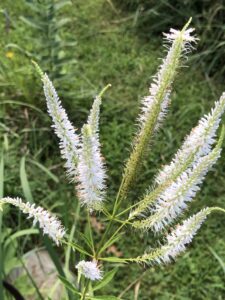
-
The demure, white spikes of Culver’s Root attract pollinators.
-
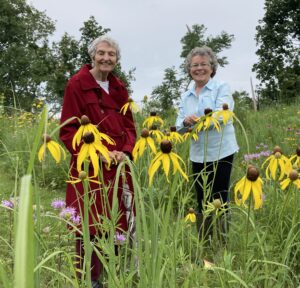
-

-

-
Morning sunlight.
by Marion Patterson | May 13, 2021 | Birds, Nature
In mid-April, we got a call from a concerned Montessori teacher. Her school is in downtown Cedar Rapids amid office buildings, restaurants, and taverns. Cars constantly buzz by.
She’d spotted a hen mallard duck nesting in the school’s playground and asked what she could do to help it. She knew what a great teaching opportunity this was. Children and teachers have spent the past several weeks observing and documenting the mama Mallard. They even named her – Mallory. Her partner is dubbed Howard.
Over the years we’ve fielded many similar calls from people in urban areas spotting nesting mallards and Canada geese.
For years people have heard that transforming natural areas to cities and suburbs destroys wildlife habitat. It does, at least for wildlife that shun people. However, many wild animals increase as an area urbanizes. House sparrows, rats, and pigeons come to mind, but some other beneficiaries are more welcome.
Cedar Rapids is bisected by the Cedar River, and many ducks nest downtown. Often a hen duck will nest in a large raised concrete flower pot, or as the Montessori School discovered, in the kids’ playground.

This female mallard is quite at home near the Montessori school.
Although this may seem odd, a city may be the safest nesting place. Mallards nest on the ground. Raccoons, dogs, opossums, and a slew of other predators love dining on eggs. Most duck nests out in the country get predated. All that’s left after a raccoon raid is eggshells. Fortunately, many waterfowl species renest, and usually enough nests are successful to maintain the population.
It may be that a nest in a raised concrete flower pot reduces the odds of a raccoon raid.
For many years a duck nested under a shrub near the front door of Washington High School. The hundreds of students who passed by the nest may have discouraged predators.
Canada geese also aren’t shy about people, factories, railroads, or even Interstate Highways. Many nest along Cedar Lake in an industrial area of Cedar Rapids. Normally they hide their nest, but we found one goose nesting immediately adjacent to a busy trail in plain sight.
This bird is now so numerous in many cities that they’re considered a nuisance, although we love seeing and hearing them.
So, what should someone do if they find a nesting duck or goose in a seemingly unlikely and unsafe place? The answer is simple. Just like the Montessori classes, Leave it alone, take photos, and enjoy having a beautiful and interesting animal make its home near people.
by Marion Patterson | Nov 26, 2020 | (Sub)Urban Homesteading, Energy Efficiency
Many people cringe when the monthly electric bill arrives. Not us. In 2019 the average homeowner in the United States paid $115 a month. Our last bill was $13. That is right! Thirteen bucks. Almost everyone can tame their electric bill. Here’s how we did it:
- Replaced incandescent and compact fluorescent bulbs with LED (Light Emitting Diode) bulbs. They last almost forever and only use about a fifth the electricity of incandescents. LED bulbs were once expensive but now are as low as $1 each.
- Purchased high-efficiency Energy Star Rated appliances. Yes, you pay more upfront. The savings are significant over time.
- Turn it off! The human index finger has enormous bill cutting power and is free. If a light, television, computer, or any other power-consuming device is not being used…. we turn it off. Remember many of today’s appliances are “vampires.” All those glowing lights on appliances collectively suck energy and balloon your bill. Some you cannot unplug or turn off. Others you can.
- Avoid night lighting. Our outdoor lights stay “off” unless we need them briefly for outdoor work. Use motion light sensors if you think you need to be aware of outside activity at night.

Soaking up the sun.
After completing the above steps, we installed photovoltaics on the barn’s roof. Photovoltaics (PV) are panels that use the sun’s energy to create electricity. Electricity generated by our small system partially powers our home’s needs. When we produce more than we’re using it flows out to the power grid. When we’re using more than we make, which always happens at night, grid power flows in. At the end of the month, we pay the “net”. Because our system is small, over time we never produce as much electricity as we use, but we make most of it. Combined with efficiency we tamed our electric bill.
The Federal Government and many states offer tax credits to homeowners who install solar. The value of credits diminishes each year, so acting soon maximizes tax savings and tames electric bills. It’s a great time to “go solar”.
 The distant view and the feel are “Hot August Days.” The near view and sounds are mid-May. With this hot weather, the trees have popped, the fruit trees are in full bloom, and the early garden plants emerging after the cooler and damp weather. We may break a century-old heat record today.
The distant view and the feel are “Hot August Days.” The near view and sounds are mid-May. With this hot weather, the trees have popped, the fruit trees are in full bloom, and the early garden plants emerging after the cooler and damp weather. We may break a century-old heat record today.


































